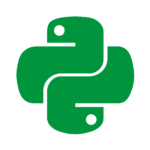
STAQ
💼 | 🗓️ Founded in 2012 | 💲 -
👥 Unknown Employees | 📍 Partially Remote
About STAQ
STAQ was founded by executives from digital advertising’s original leading companies including Advertising.com, DoubleClick, Rubicon Project, and AOL. They had a first-hand view of the intricacies and inner workings of the digital advertising ecosystem and how it was evolving. They saw data accumulation, and the unification of that data for analytics as one of the most significant challenges that digital media companies would face.
Today, STAQ has offices in Baltimore, London, Austin, and New York. They work with some of the world’s biggest publishers and brands.
Fun Fact: When the company was founded there was a need for large amounts of basic coding. They set up a program to teach people Ruby for $20/hr with the idea of building engineers in house. This became an opportunity to foster culture, generate some buzz, and enable job growth. This was a huge success and many of those original members are still STAQ employees today.
Technical Leadership Team

Tech Stack

JavaScript
Python
React
Ruby
What They're Building
Every digital media company has the same problem: disparate data from numerous sources across mobile, desktop, email, video, social, search, and more. STAQ’s platform integrates with over 400 services to collect all the data, unify it, and consolidate it on one singular platform. This enables users to surface revenue generating insights that help them drive business.
STAQ processes hundreds of billion cells of data on a daily basis. The STAQ data platform is customizable, flexible, and useful for sales, ops, finance, and executive teams.
Their ability to manage massive amounts of data for easy access, visualization and actionability is why it’s used by companies like Hulu, Roku, Quibi, Turner, Warner Media, Daily Mail, Politico, Conde Nast, and Accuweather, to name a few.
What tech stack are they building with?
- Frontend – Javascript, primarily React
- Middle Tiers – Ruby, moving towards Python
- Back End – Ruby, moving towards Python, Apache HAWQ, PostgreSQL, BigQuery, Hadoop
- Other important tools in the toolshed – Apache NiFi, Apache AirFlow, Kubernetes, TensorFlow